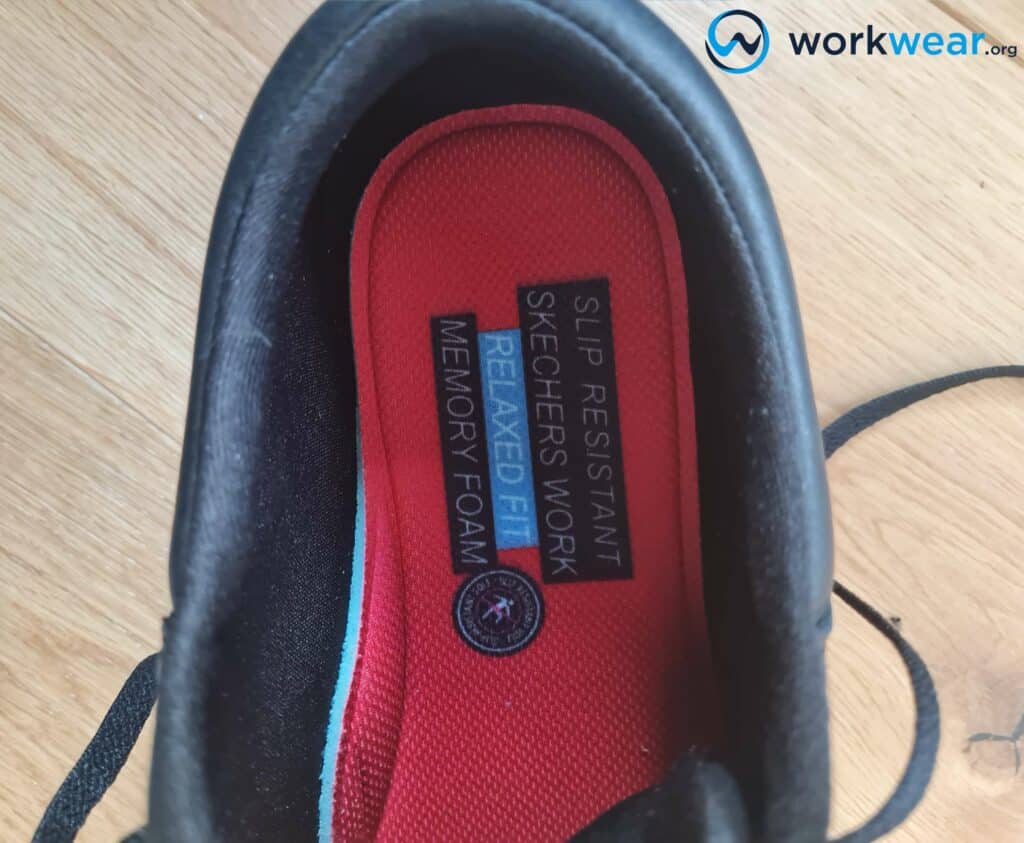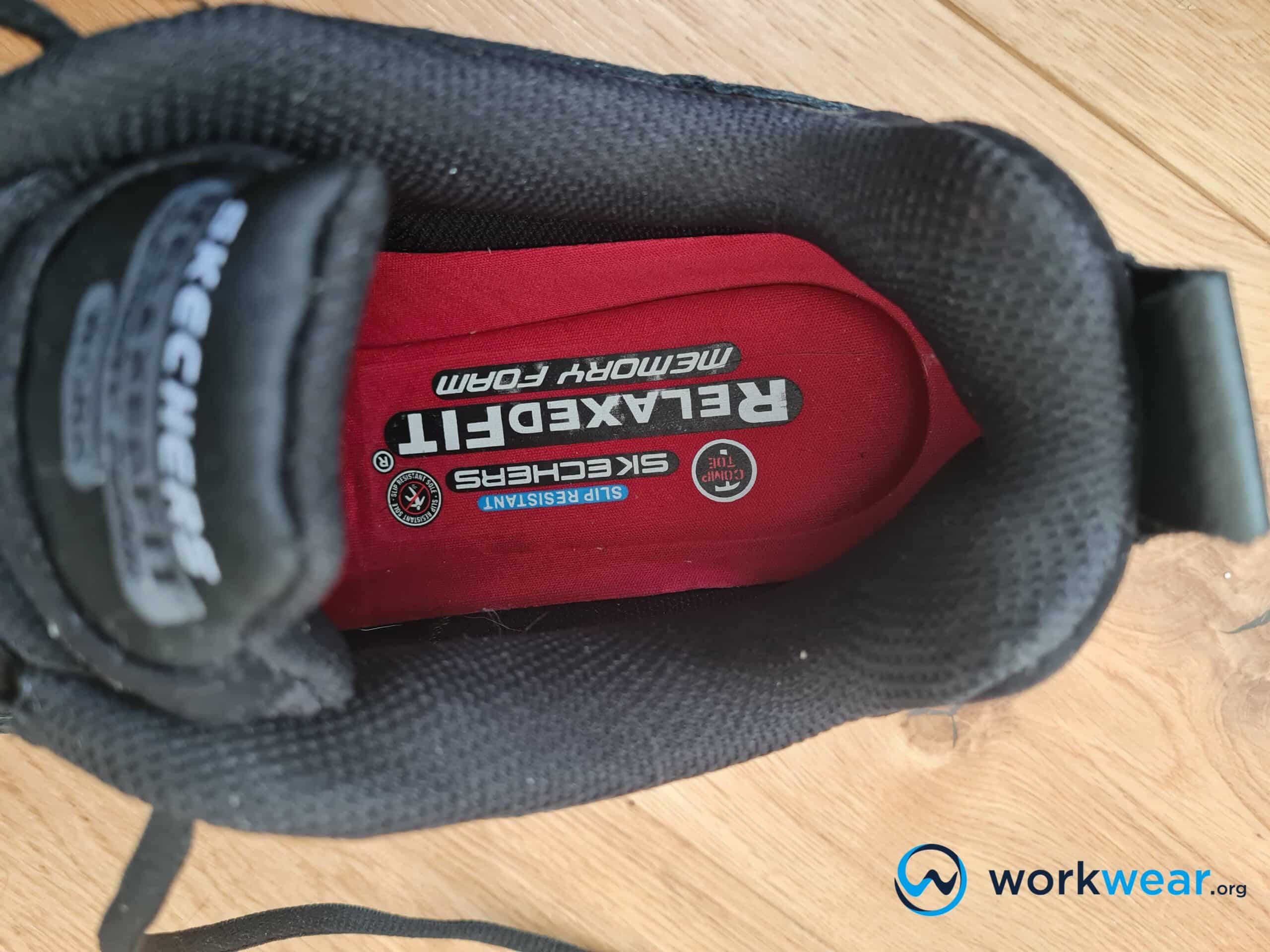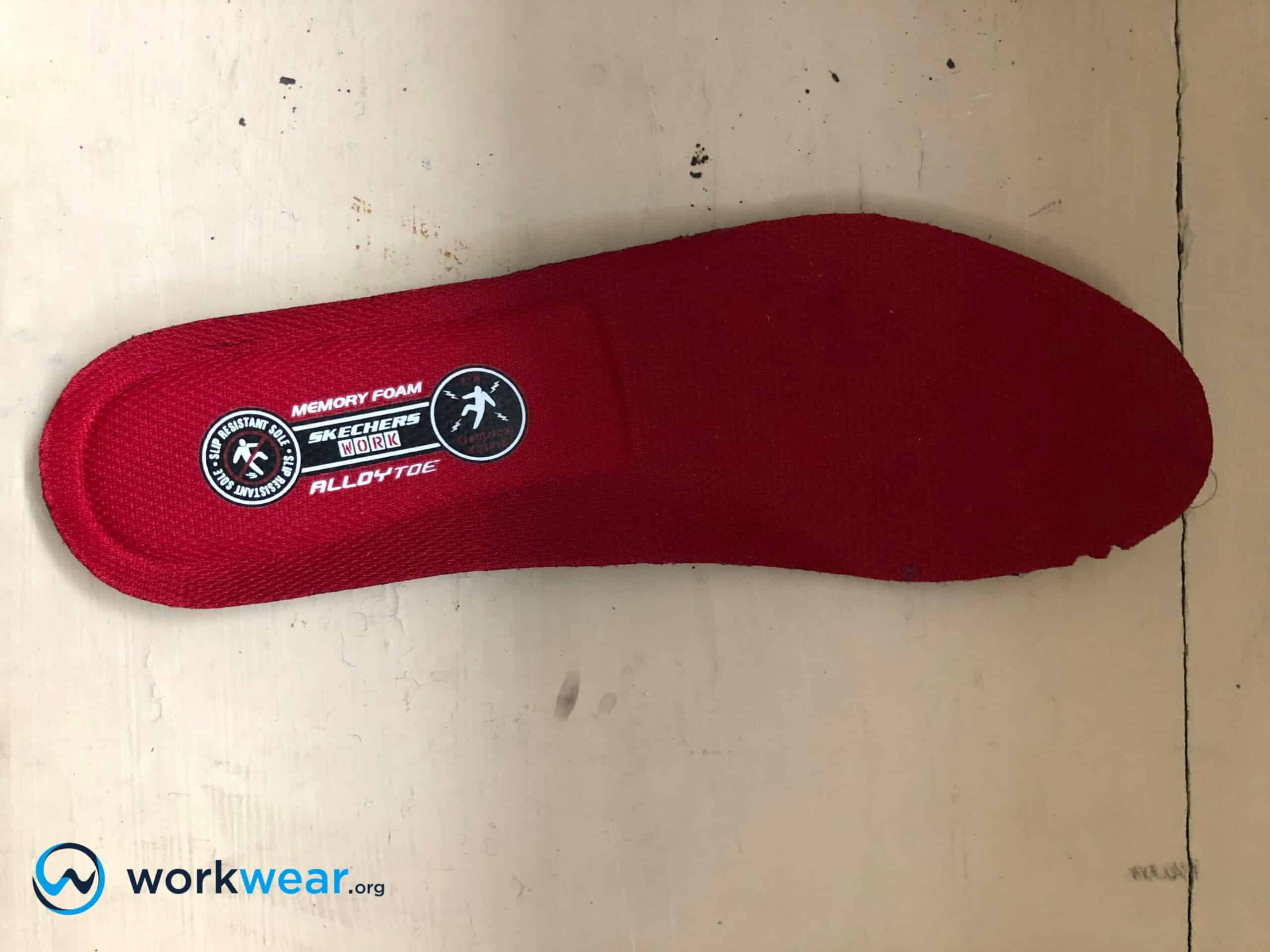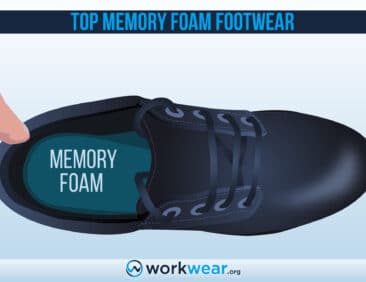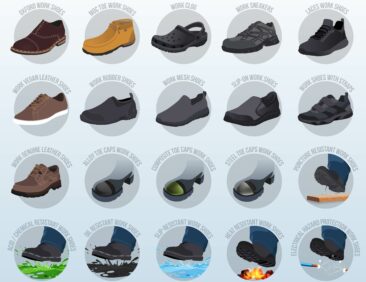Memory Foam in Work Footwear Demystified
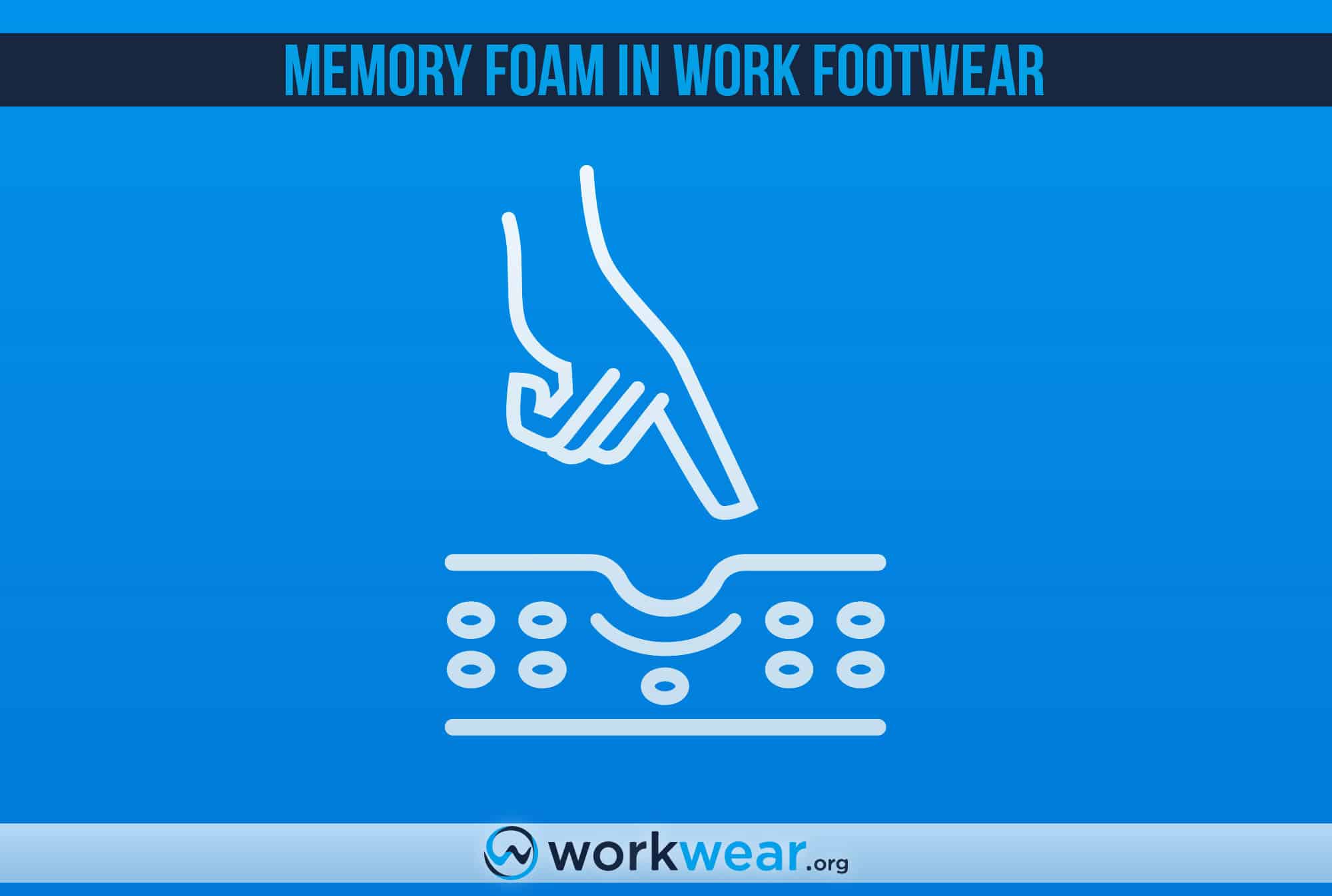
Work footwear must be protective but should also be designed to keep the feet comfortable throughout the most hectic workdays. As a result, specific materials and components are now fitted into work boots and shoes to improve their comfort level significantly. One such material is memory foam – a material that’s synonymous with comfortable sleep products (including mattresses) and offers the same superior comfort in work footwear.
Memory foam is used in different sections of work shoes and boots with the same goal of alleviating discomfort, especially over prolonged periods of standing or walking.
In this article, we’ll discover more about memory foam’s role in work footwear, including details on the material’s strengths and drawbacks.
Where is Memory Foam Used in Work Footwear?
Memory foam is used in the following parts of work footwear:
Footbed or Insole
Memory foam footbeds or insoles are built into the bottom of the footwear, directly under the feet. They create padded bases that are soft enough to relieve foot discomfort while also relieving pressure spots.
Memory foam footbeds make work boots and shoes remarkably comfortable, especially with their ability to mold to the feet’s contours for a personalized feel.
These insoles may be permanently fitted into the footwear, but removable insoles can be inserted into the shoes or boots for enhanced comfort.
Other Padded Sections
Aside from being used in comfortable insoles, memory foam is also maximized in other sections of work footwear.
Its cushioning properties make it ideal for enhancing high-wear areas, preventing them from rubbing painfully against the skin for a more comfortable experience.
Footwear such as the Dr Martens 2976 Boot features memory foam-padded forefoot and heel areas, fighting painful friction and offering another layer of protection against minimal impact.
Key Advantages of Memory Foam in Work Footwear
Comfortable cushioning
Memory foam offers exceptional cushioning that considerably improves foot comfort.
The combination of softness with contouring qualities gives memory foam a uniquely comfortable feel that other foam materials can’t match.
Flexible
Memory foam has a flexible structure.
Insoles or footbeds made with memory foam easily flex every step, so walking with these components at the bottom feels more natural and comfortable.
The flexibility of memory foam also promotes unrestricted movements for enhanced foot agility.
Personalized feel
Memory foam has the remarkable ability to follow the shape of whatever object presses into its surface.
With every step, the memory foam footbed immediately conforms to the foot’s contours, resulting in a superbly comfortable fit that feels personalized – a quality that other materials can’t do.
Eases pressure spots
As memory foam follows the foot’s curves, it also works to relieve pressure points which can cause discomfort.
Instead of the memory foam footbeds or cushioned sections rubbing against the skin, they compress to follow the natural contours – preventing uncomfortable chafing that may lead to blisters.
Shock absorbent
Memory foam delivers reliable shock absorption, greatly reducing foot discomfort risk.
Memory foam insoles soak up the impact of repeated steps on hard ground, saving the muscles and joints from absorbing the shock.
The memory foam base distributes weight evenly so it’s not concentrated on a one-foot area (such as the heel) for better daily comfort.
Removable insoles can improve footwear comfort
Memory foam insoles come in removable options that can be placed on top of built-in footbeds. These inserts are great for adding another layer of cushioning when the existing insole has deteriorated or if you want to improve the softness or shock absorption of the footwear.
Enhanced comfort can be enjoyed without buying a new pair of work boots or shoes.
Can preserve comfortable warmth
Memory foam naturally retains heat.
Insoles made with memory foam can help keep the feet comfortable in some cold conditions as the material traps much-needed warmth.
This prevents the footwear interior from becoming uncomfortably chilly in certain low-temperature environments.
Key Disadvantages of Memory Foam in Work Footwear
Can increase the footwear’s price
In general, adding memory foam components can jack up the price of footwear.
This is especially true if the work boots or shoes have other enhancements or high-tech features. With the increased price, memory foam in work footwear may not be the best option for those looking for the most affordable products.
Softens when exposed to heat
Memory foam tends to soften when exposed to heat. This results in the material losing its ability to support the foot as it tends to flatten instead of continuing to follow its contours.
As such, memory foam’s most remarkable attributes may not fare well in hot environments.
Less stable compared to more rigid materials
Memory foam’s ability to instantly follow the foot’s shape can also have drawbacks.
It prevents the material from retaining a constantly rigid structure that’s needed for maximum support, which can keep the foot in a properly aligned position for long periods.
More rigid materials like plastic or leather typically offer better foot stability.
Prone to overheating
The structure of memory foam isn’t the most welcoming for air circulation, so the material is more prone to overheating.
All-day footwear used in humid or hot conditions can be a bigger problem, where the non-breathable material can cause foot discomfort.
Not as durable as other materials
Memory foam footbeds can deteriorate faster than more rigid materials, which can retain their structures for much longer.
The foot’s shape can leave a permanent impression on memory foam, which may not be able to bounce back to its original form over time.
Comparison Table
|
Pros |
Cons |
|
|---|---|---|
| Memory Foam |
|
|
Personal Testing Experience
We’ll now share our experiences using high-performance boots and shoes with memory foam. The Skechers Work Women’s Synergy – Sandlot Alloy Toe Work Shoe showcases the signature Skechers Memory Foam insole delivering ample cushioning and pressure relief. In addition, it comes with alloy toes forming a barrier against falling objects, protecting the toes against crushing injuries in hazardous work environments. This outstandingly comfortable shoe is also durable; although it’s not waterproof, the sole can quickly become dirty. Meanwhile, the Reebok Sublite Cushion RB806 Women’s 8-Inch Tactical Waterproof Boot uses the proprietary MemoryTech Massage footbed that helps promote good blood circulation while providing impact absorption and a customized feel. Its waterproof yet breathable design locks out liquids while encouraging sweat to dissipate quickly, although the outsole doesn’t look as durable as more robust designs.
Conclusion
Memory foam is used to make work footwear a lot more comfortable without compromising overall performance. The material is often used for insoles or footbeds but is sometimes fitted into high-wear areas of footwear to enhance comfort. Memory foam gives work footwear a comfortably cushioned, flexible fit that feels personalized according to the foot’s unique shape. It also preserves comfortable warmth, eases pressure, and absorbs shock, with removable options that can significantly boost the comfort of work boots and shoes. However, memory foam is susceptible to overheating and softens with exposure to heat. Typically, it’s less durable, provides less support than more rigid materials (such as plastic), and often increases a product’s price point.
FAQs
- Is memory foam breathable?
- In general, memory foam is not that breathable. This is because its structure is denser than other types of foam (such as latex). The enhanced density doesn’t allow plenty of air to pass through, trapping heat which can make the feet uncomfortable after hours of footwear use.
- Do all memory foam sections in work footwear heat up quickly?
- Not necessarily. Some memory foam components, such as Skechers’ Air-Cooled Memory Foam insoles, are enhanced specifically to maintain a cool feel.
- How can memory foam in work footwear help with foot pain?
- Memory foam footbeds or insoles distribute the weight evenly across the feet. Instead of the shock being focused on only the heels or balls of the feet, it’s spread out equally, significantly alleviating the pressure and reducing the risk of foot discomfort.
- Do removable memory foam insoles make all footwear more comfortable?
- Not always. Removable memory foam insoles offer enhanced cushioning and shock absorption, but they may feel uncomfortably tight if there’s not enough space inside the boots or shoes.
